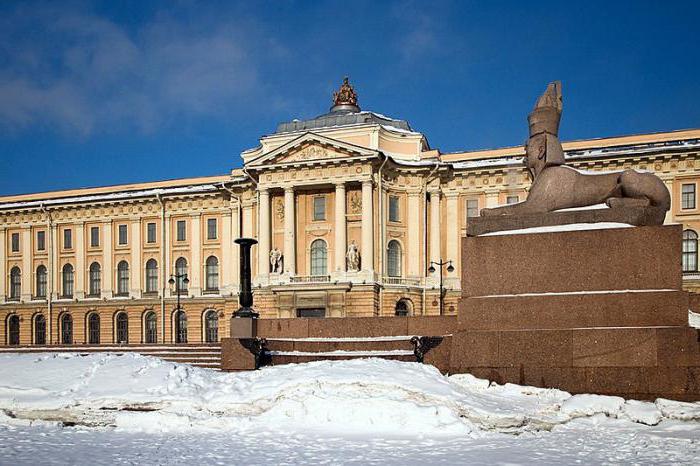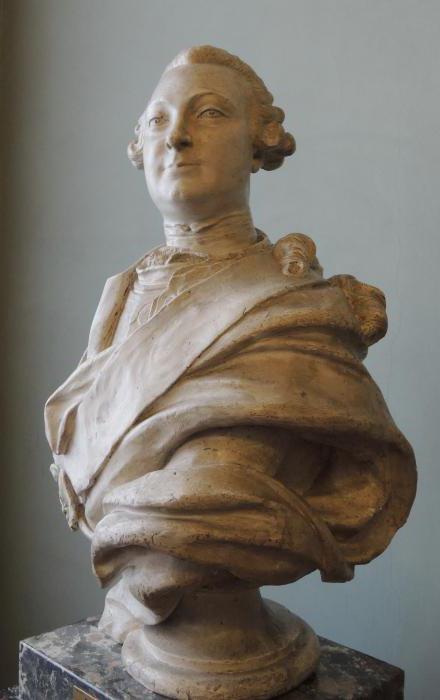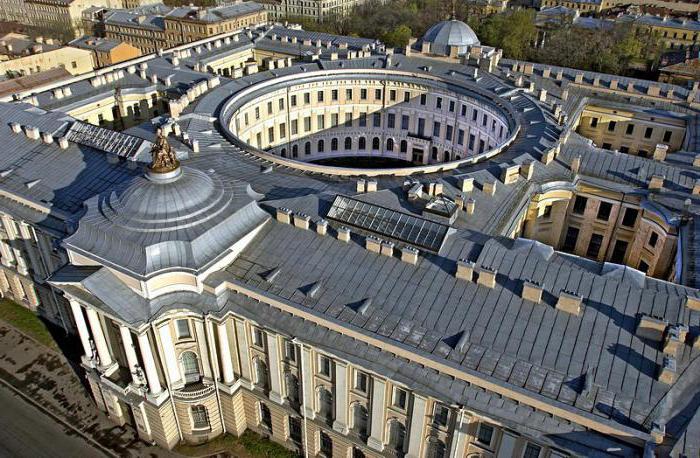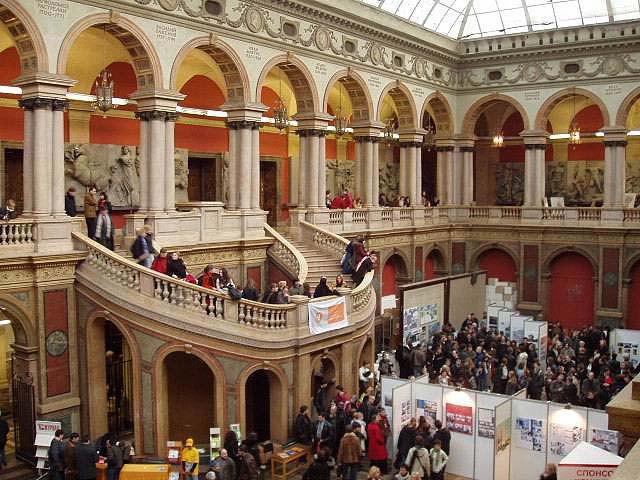An adornment of one of the St. Petersburg embankments is a building, the peace of which is guarded by two sphinxes, once brought from distant Egypt. It houses the St. Petersburg Academy of Arts, nowadays called the Institute of Painting, Sculpture and Architecture. It is rightfully considered the cradle of Russian fine art, which has earned well-deserved fame throughout the world.
The birth of the Academy
The Academy of Arts in St. Petersburg was founded by the favorite of Empress Elizabeth Petrovna, a prominent Russian statesman and philanthropist of the XVIII century Ivan Ivanovich Shuvalov (1727-1797). A photo depicting his bust is presented in the article. He belonged to that category, rare at all times, of people who sought to use their high position and wealth to the benefit of Russia. Having become the founder of Moscow University, which today bears the name of Lomonosov, in 1755, two years later he came up with the initiative to create an educational institution designed to train masters in the main types of fine art.

The Petersburg Academy of Arts, originally housed in his own mansion on Sadovaya Street, began work in 1758. Most of the financing was carried out from Shuvalov’s personal funds, since the treasury allocated an insufficient amount for its maintenance. The generous philanthropist not only wrote the best teachers from abroad for his money, but also presented the collection of paintings he created with the academy he created, thus laying the foundation for the creation of a museum and library.
First Rector of the Academy
With the early period of the Academy of Arts, as well as the construction of its current building, the name of another person who left a noticeable mark in the history of Russian culture is associated. This is an outstanding Russian architect Alexander Filippovich Kokorinov (1726-1772). Having developed, together with Professor J. B. M. Wallen-Delamot, a project for the building into which the academy moved from the Shuvalov mansion, he took the post of director, then professor and rector. The circumstances of his death gave rise to one of the many St. Petersburg legends, known as the “Phantom of the Academy of Fine Arts”. The fact is that, according to the surviving data, the rector of the academy did not die as a result of water sickness, as indicated in the official obituary, but hanged himself in her attic.

There are two possible causes of suicide. According to one version, the reason was an unfounded accusation of misappropriation of public funds, that is, corruption. Since in those days it was still considered dishonesty and shame, and Alexander Filippovich could not justify himself, he preferred to die. According to another version, the impetus for such a step was a reprimand received by Empress Catherine II, who visited the Academy building and stained her dress on a freshly painted wall. Since then, they say that the soul of a suicide, not having received repose in the Higher world, is doomed to wander forever in the walls he once created. His portrait is presented in the article.
Women in the history of the academy
In the Catherine era, the first female academician of the Petersburg Academy of Arts appeared. She became a student of the French sculptor Etienne Falcone - Marie-Anna Collot, who created with her teacher the famous "Bronze Horseman". It was she who performed the head of the king, which became one of his best sculptural portraits.
Amazed by her work, the empress ordered Collo to be granted a life pension and to be awarded such a high rank. Meanwhile, there is an opinion among a number of modern scholars that, contrary to the established version, Marie-Anna Collot, a female academician of the Petersburg Academy of Arts, is the author of not only the head of the Bronze Horseman, but the entire figure of the tsar, while her teacher sculpted only a horse. However, this does not detract from his merits.
Along the way, it should be noted that another artist who came from France and was one of the best portrait painters of her time, Vizhe Lebrun, deserved the high and honorary title in Russia at the end of the 18th century. Academician of the Petersburg Academy of Arts - the title awarded only to graduates. Lebrun received the no less high-profile title of an honorary free community, which at that time was given to outstanding artists who received education abroad.
The order of training adopted in the XVIII century
The St. Petersburg Academy of Arts since its inception played a key role in the development of Russian culture. How seriously the work was set in it can be evidenced by the fact that in the XVIII century, training lasted for fifteen years, and the best graduates were sent at public expense for an internship abroad. Among the sections of art studied at the academy were painting, drawing, sculpture and architecture.
The entire training course provided by the Academy of Arts to its students was divided into five classes, or sections, of which the fourth and fifth were the lowest and were called the Educational School. They adopted boys who were five to six years old, where they learned to read and write, and also acquired basic skills, drawing ornaments and copying finished images. In each of these two primary grades, training lasted three years. Thus, the course of the Educational School lasted six years.

Sections from third to first were the highest, they were considered, in fact, by the Academy of Arts. In them, students who had previously studied as a single group were divided into classes in accordance with their future specialization - painting, engraving, sculpture or architecture. In each of these three higher sections, they studied for three years, as a result of which directly in the Academy itself the training lasted nine years, and together with six years spent in the Educational School, it was fifteen years. Only much later, in the XIX century, after the Educational School was closed in 1843, the period of study was significantly reduced.
Other disciplines
The Academy of Arts in St. Petersburg, modeled on similar European educational institutions, released from its walls not only professionally trained specialists in various fields of art, but also widely educated people. In addition to the main disciplines, the curriculum also included foreign languages, history, geography, mythology, and even astronomy.
In the new century
The St. Petersburg Academy of Arts in the 19th century received its further development. The head of the rich Russian philanthropist Count Alexander Sergeevich Stroganov carried out a number of reforms, as a result of which restoration and medal classes were created, and serfs were also allowed to study under certain conditions. An important stage in the life of the academy of that period was its transfer, first to the Ministry of Public Education, and then to the Ministry of the Imperial Court. This largely contributed to obtaining additional funding and allowed more graduates to go abroad.
Dominated by classicism
Almost throughout the nineteenth century, the only art style recognized by the academy was classicism. The priorities of teaching at that time were greatly influenced by the so-called hierarchy of genres - the system of dividing the genres of fine arts adopted by the Paris Academy of Fine Arts by their significance, the main of which was considered to be historical painting. This principle lasted until the end of the XIX century.

Accordingly, students were obliged to paint pictures on subjects taken from the Holy Scriptures or from the works of ancient authors - Homer, Ovid, Theocritus, etc. Ancient Russian subjects were also allowed, but only in the context of the historical works of M. Lomonosov and M. Shcherbatov, and also Synopsis - a collection of works of ancient chroniclers. As a result, classicism, which was preached by the St. Petersburg Imperial Academy of Arts, inevitably limited the creativity of students, driving it into the narrow framework of dogmas that had outlived their lives.
The rebel artists who glorified Russian art
The gradual liberation from the established canons began with the fact that in November 1863, the 14 most gifted students included in the number of participants in the gold medal contest refused to paint paintings on a given plot from Scandinavian mythology, demanding the right to choose a theme for themselves. Having been refused, they defiantly left the academy, organizing a community that became the basis for the creation of the subsequently famous Association of Traveling Art Exhibitions. This event went down in the history of Russian art as the Riot of Fourteen.
Graduated painters such as M. A Vrubel, V. A. Serov, V. I. Surikov, V. D. Polenov, V. M. Vasnetsov and many others became graduates and academicians of the Petersburg Academy of Arts. Along with them, one should also mention a galaxy of brilliant teachers, among whom V. E. Makovsky, I. I. Shishkin, A. I. Kuindzhi and I. E. Repin.
Academy in the 20th century
The St. Petersburg Academy of Arts continued its activities until the October Revolution of 1917. Six months after the Bolsheviks came to power, by the decision of the Council of People's Commissars, it was abolished, and various art educational institutions began to be created and periodically changed their names, designed to prepare masters of the new socialist art. In 1944, the Institute of Painting, Sculpture and Architecture, which was housed within its walls, was named after I.E. Repin, which he carries to this day. The very founders of the Academy of Arts - chamberlain of the imperial court I. I. Shuvalov and the outstanding Russian architect A. F. Kokorinov, forever entered the history of Russian art.